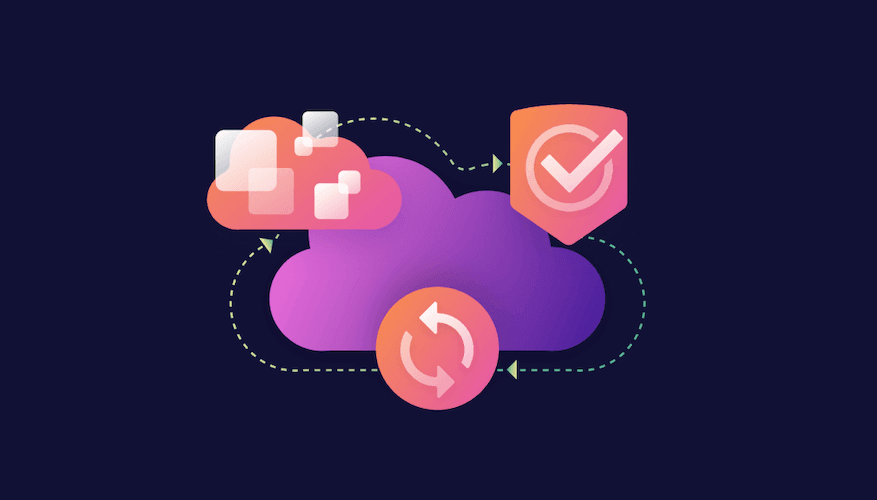Creating AWS security efficiencies in IT
January 4, 2023
0 mins readAs we enter 2023, both security and digital transformation efforts (e.g. cloud migration) continue to be important priorities for organizations. This combination brings huge challenges for IT teams, who are not only required to facilitate major digital changes and increase developer productivity but also ensure that this transformation is secure by default.
When using AWS in particular, it’s challenging to understand how to strike this balance between accelerated cloud growth and security. AWS’ ecosystem is vast — almost overwhelmingly so.
But luckily, there are several steps that your teams can take to create AWS efficiencies and streamline cloud security.
Three tips for managing security in AWS
Managing security in AWS doesn’t have to be time and labor-intensive for your IT team. Your organization can incorporate security into AWS efficiently, as long as you put the right policies, standards, and practices in place — both internally and externally. It’s also important to incorporate measures to uphold and enforce them consistently.
Here are three practical ways to implement these security guidelines:
1. Work to fully automate your deployment pipeline
Deployment automation is a key best practice for facilitating efficiency in your AWS environments. It enables development velocity and takes manual provisioning and infrastructure management off the IT team’s plate. Our research shows that an overwhelming majority of companies use some level of automation, with almost a third of respondents having an entirely automated deployment pipeline.
Automating your deployment pipeline doesn’t just improve development efficiency, it also bolsters your ability to adopt a strong approach to security. When a company has a smooth-running, end-to-end development pipeline, it’s much easier for them to focus on security testing best practices such as static application security testing (SAST), software composition analysis (SCA), container image testing, and scanning infrastructure as code (IaC). Automation complements all four of these security best practices and makes them far more achievable. In fact, organizations with fully automated deployment pipelines are twice as likely to adopt SAST and SCA tooling into their SDLC.
2. Create a continuous security feedback loop
As today’s developers build modern apps, they wrap custom code and open source libraries within their Docker containers. The final product ends up including infrastructure as code and other configuration files, all deployed together into the environment. In other words, developers aren’t just deploying code — they’re deploying entire environments. And these environments need to be secured holistically and contextually.
It takes a continuous security feedback loop to secure environments at this level. And this all starts by integrating security measures at the IDE and CLI levels. By baking security into development environment tools, your teams will detect most issues before they even reach staging environments. This shift left mentality enables teams to get real-time feedback in their familiar development environments, in their container registries, or through their CI/CD pipelines. The earlier you catch issues, the quicker it will be to mitigate them — facilitating better AWS efficiency for your entire environment.
3. Use your relationship with AWS to accelerate time-to-value for your customers while staying secure.
As you work to create more secure development processes, your teams will likely run into the question, “how do we balance development speed and time-to-value for our customers with security?” One of the best ways to strike this balance is to work with your cloud provider to streamline security implementation.
One of these steps toward AWS efficiency starts at procurement. AWS works closely with its ecosystem of security vendors, offering customers the opportunity to streamline their procurement process. You can do this by purchasing third-party solutions using your existing billing mechanisms within the AWS Marketplace, consolidating invoicing, cutting red tape in legal and procurement, and accelerating procurement processes — sometimes by several weeks!
In addition, many of these third-party solutions within the AWS Marketplace have been enabled to apply to a customer’s Enterprise Discount Program (EDP) — a set spending commitment with AWS. These companies can use up their allocated EDP spend by purchasing applicable solutions in the AWS Marketplace, saving time and money, and accelerating time-to-value for the end-customer.
AWS also has measures in place to mitigate unexpected costs. Because organizations often face accidental overspending during security setup due to misconfiguration, AWS sometimes offers credits or concessions to compensate for overspending mistakes. Or, as a preventative measure, some companies sign larger contracts and take advantage of large amounts of proof of concept credits, protecting them against mounting cloud costs.
Some of the most intimidating aspects of securing your AWS ecosystem, such as mounting costs and disruptions to development processes, don’t have to be a hurdle to you and your IT team. With the right plan in place, your organization can build out a secure, efficient AWS ecosystem without unexpectedly throwing off your costs or existing processes.
Live Hack: Exploiting AI-Generated Code
Gain insights into best practices for utilizing generative AI coding tools securely in our upcoming live hacking session.





















